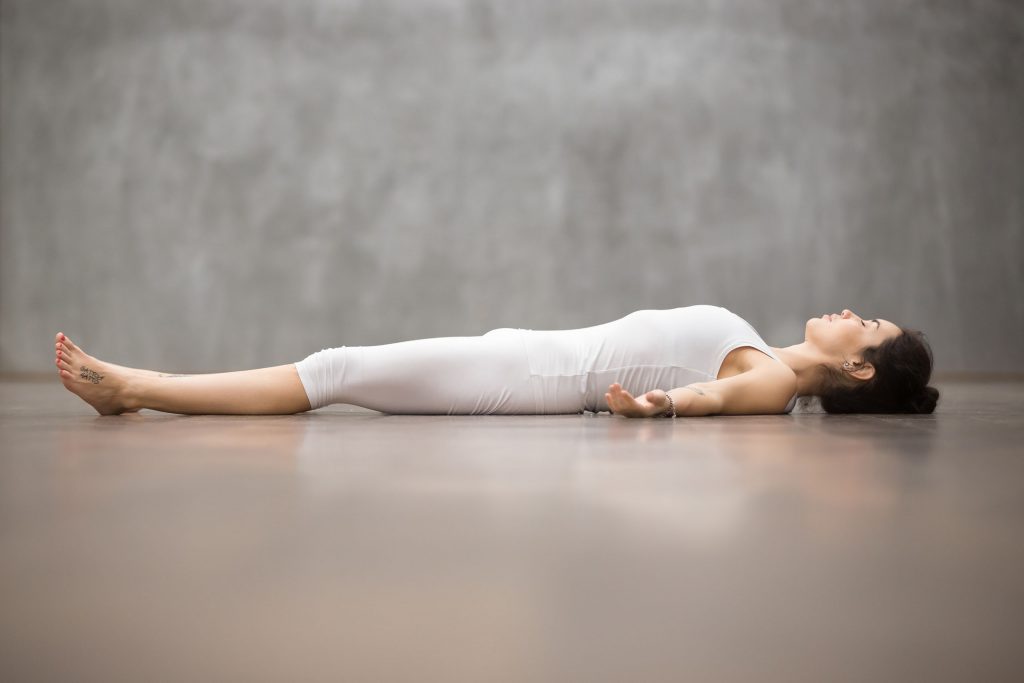
After a stressful day at work, you only want one thing: to finally fall into bed and sleep. But that is often easier said than done. Countless thoughts run through your head. You're angry about an unpleasant situation you were caught in today and you're already thinking about what you have to do tomorrow.
All the stress that lies dormant inside you just won't let you rest, no matter how tired you are. You're not alone in this. A full 80 % of Germans said in the DAK Health Report 2017 that they have trouble falling asleep. A meditation to fall asleep has been proven to help you fall into a peaceful and restful sleep in the evening.
This Youtube meditation to fall asleep gives you a peaceful and restful sleep and gives you energy for the next day. In this video Christina Grahn-Hommelsheim, trainer for our Greator coaches, takes you on a dream journey..:
Meditation is a millennia-old method that helps you to consciously put yourself in a state of calm. The goal is to calm the mind and silence the clutter of thoughts. Targeted distractions are often used. For example, you concentrate on your breathing. You visualize how the air you inhale flows through each part of your body in turn.
With the exhale, you follow exactly this path back again. The important thing is to focus only on what is important right now. And that is your inner peace. The meditation to fall asleep puts you in a meditative state that is very close to the frequency of deep sleep - the best conditions to then glide into the land of dreams.

To take full advantage of the relaxing effect of meditation, you need the right atmosphere. It is important that you feel completely comfortable and are not distracted by anything or anyone. Let's start with the choice of the place. Practicing meditation to fall asleep in your bedroom certainly seems the most logical to you, doesn't it? But this is not necessarily the best solution.
You may feel slightly pressured there because you keep thinking about how long you'll be lying awake here every night. If this is the case for you, find another place, for example a cosy corner in the living room. If the weather is good, you can also sit out in the garden or on the balcony. Test where you feel most comfortable and where you are least distracted.
As already mentioned, light is also crucial before sleep. So go for dim, warm light sources, such as a few candles. You just can't get into meditation because every little noise distracts you? Then put on some quiet music. It will help you to block out the distracting noises.
When meditating, it is important that you do not put yourself under pressure. You may not succeed in reaching a meditative state the first time. That is not a bad thing. As with so many things in life, practice is needed. Don't be too hard on yourself.
Start small and increase more and more. So, for example, start with a five to ten minute meditation and extend the period step by step. For beginners are suitable guided meditations especially good for getting started when you are falling asleep. A soothing voice sounds to guide you as you meditate and help you focus on yourself.
We have prepared a great meditation by Christina Hommelsheim. You can listen to it now if you like:
Breathing meditation is about focusing completely on the inhalation and exhalation. Place yourself on a blanket or yoga mat and lie on your back. Stretch your legs straight out, your arms lying loosely beside you. Then close your eyes and wander through your body in your mind. Search your body for tension and try to let go of it in exactly these places.
Take care of your face, too. Don't squint your eyes, but close them gently. Your mouth, your jaw, your forehead - everything is relaxed. Now direct your attention to your breathing. Take a deep breath, bring the air into your belly and hold it.
Count to ten and then exhale very slowly through your nose. Repeat the whole thing at least ten times. You notice how your thoughts slowly begin to circle again, even though you are still in the middle of meditation? Then consciously follow your breath as it flows through your body. Feel how the air moves into your belly, moves back up again and escapes through your nose.
The Meditation type "Body scan" is almost self-explanatory. This is literally about scanning your body. Lie on your back and stretch your arms and legs loosely. Close your eyes and breathe consciously into your belly and slowly out again. Feel at which points your body touches the floor.
Become aware of the gravitational pull of the earth and the weight of your body. Then direct the concentration to your face. Relax your facial features and jaw so that your mouth opens slightly. Now pay full attention to your neck and shoulder area. This is often where the greatest tension is.
Visualize how the Relaxation spreads there as well. Continue in the same way with the rest of your body and let one body region after the other become loose and heavy. Don't forget to breathe slowly and deeply into your belly. When the relaxation has taken over your entire body, lie there for a moment and enjoy this state. Then it is time to go to bed.
Gratitude meditation not only supports you in finding peace. It also helps you to focus on the beautiful things in life. A positive attitude makes you more stress resistant. With this, meditation takes one of the main reasons for sleep problems further and further into the background.
Find a comfortable place. Whether you lie down or sit comfortably is up to you. Take a few deep breaths in and out. Continue in this way, recalling at least three positive things. Memorythat happened to you today.
What were you grateful for today? Think of small things like a nice conversation with a colleague or a particularly delicious lunch. With gratitude meditation, you'll regularly evoke positive feelings and ensure that stress and worry never take over.

Daily meditation has been proven to help you fall asleep faster and increase the quality of your sleep. You'll wake up fit and rested with enough energy to face the new day. A Study By PhD. David S. Black, PhD. Richard Olmstead and Gillian A. O'Reilly et al. from 2015, dealt among other things with the question of the extent to which meditation can improve sleep quality and performance. The subjects were divided into two groups.
One group was asked to meditate for five minutes every day. The results were clear. The subjects were able to noticeably improve their sleep quality, were less tired during the day and even in a better mood. The fact that meditating directly before going to bed is a particularly great help is shown by a further Study from 2015, conducted by Monica Levy Andersen, Camila Hirots and Sergio Tufik. Especially when stress is the cause, meditation to fall asleep is a valuable tool.
To understand why this is so, let's take a closer look at the brain. The so-called amygdala is the part that reacts to stress. When it is particularly active, the stress hormone cortisol is released. This in turn gives you sleepless nights. If you meditate before sleeping, you reduce the responsiveness of the amygdala and gently drift off to sleep.
You see, you are not alone with your sleep problems. Luckily, you're not helplessly at their mercy either. The meditation to fall asleep will help you to silence all the jumbled thoughts in your head and significantly improve the quality of your sleep.
Need help getting started? In our five-day Meditation Challenge you have access to a new meditation every day. Of course, we also give you valuable tips along the way, which form the basis for your daily meditation practice:

